Throughout human history, birds have been a constant source of wonder, fascination, and inspiration. Their beauty, grace, and diverse personalities have captivated artists and art lovers around the world.
From the delicate brushstrokes of the Japanese ukiyo-e prints to the lavish compositions of the Italian Renaissance, birds have appeared in countless paintings across all genres and styles.
Whether as symbols of freedom, messengers of spiritual guidance, or simply as stunning natural motifs, birds have played a significant role in the visual arts, reflecting the deep human connection with the natural world.
In this article, we will explore the history of birds in paintings, their symbolic meanings, and some of the most famous bird paintings in art history.
1. Songbirds
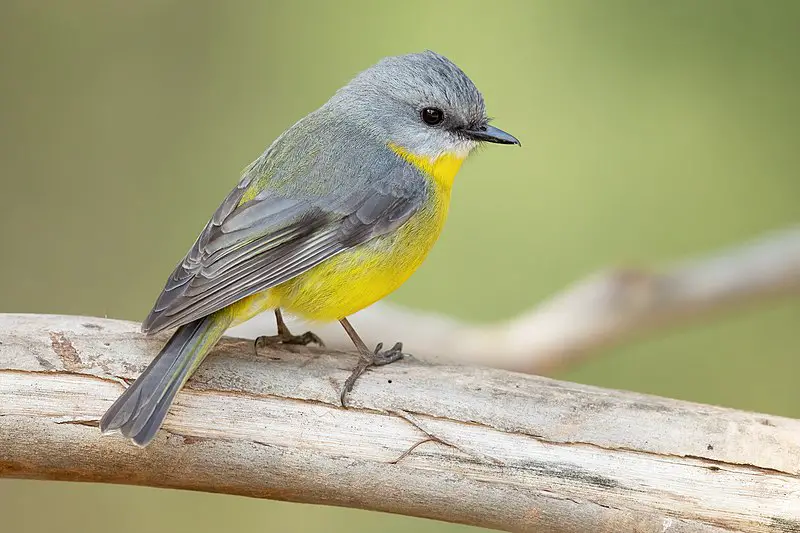
Songbirds are a special suborder of perching birds found all over the world. These beautiful creatures have intricate vocal organs that allow them to produce elaborate bird songs, making them stand out from other species.
With around 5,000 different types of songbirds in existence, they come in various sizes and colors with complex feathers adding to their beauty.
Songbirds play an important role in ecosystems as they help disperse seeds by eating fruit and insects which act as agents for pollination.
Their presence also serves to attract more biodiversity into areas where these delicate animals live, creating vibrant habitats full of life.
Scientific classification:
| Kingdom | Animalia |
| Phylum | Chordata |
| Class | Aves |
| Order | Passeriformes |
| Clade | Eupasseres |
| Suborder | Passeri Linnaeus, 1758 |
Also Featured In: Most Common United States Birds, Most Common Songs Birds that Live around You
2. Bluebirds
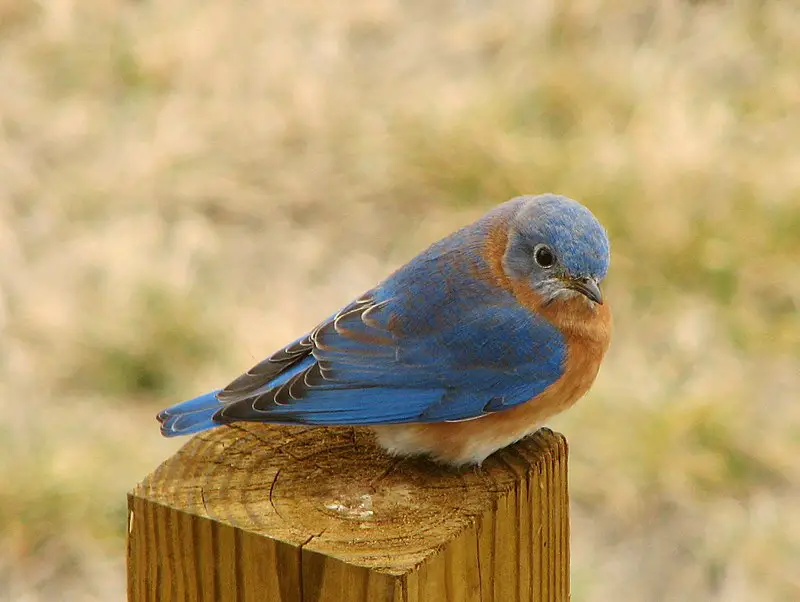
Bluebirds are a North American species of small to medium-sized birds belonging to the thrush family. They have stunning blue and rose beige plumage, with males having brighter colors than females.
These beautiful birds mainly feed on insects, but they can also eat some fruits or seeds from time to time. Bluebirds reside in open fields, meadows and backyards across much of North America.
Their cheerful songs bring joy as they fly through their habitats looking for food during the day before returning home at nightfall.
The sight of these beautiful creatures is often associated with happiness and hope – making them beloved by many people.
Scientific classification:
| Kingdom | Animalia |
| Phylum | Chordata |
| Class | Aves |
| Order | Passeriformes |
| Family | Turdidae |
| Subfamily | Myadestinae |
| Genus | Sialia Swainson, 1827 |
Also Featured In: Blue Birds You’ll Found around Us, House Birds You’ll Love to Pet
3. Hummingbirds
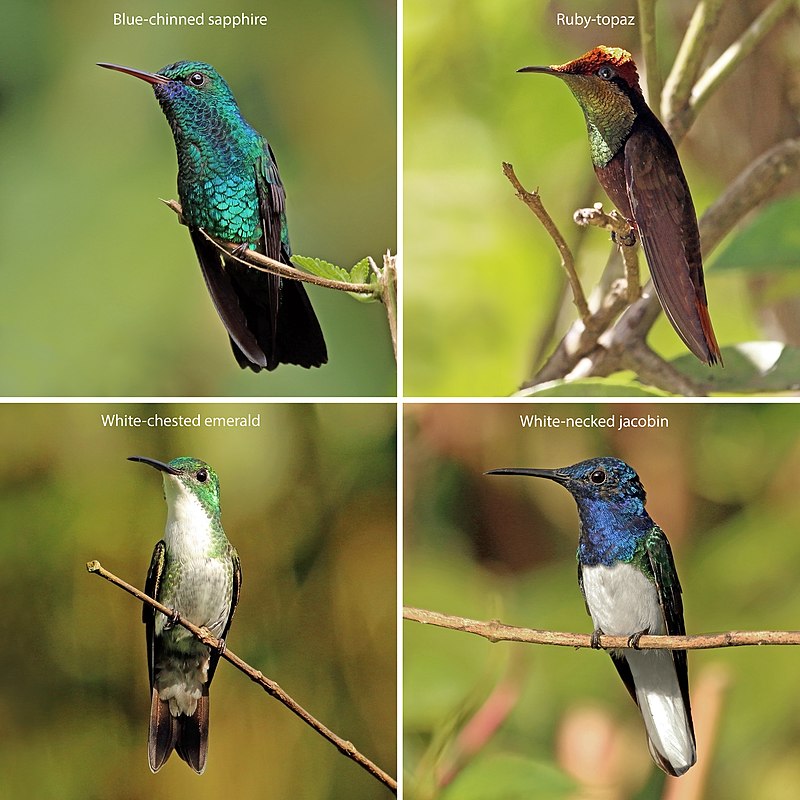
Hummingbirds are tiny birds found throughout the Americas, from Alaska to Tierra del Fuego. Most species measure between 3-5 inches in length and weigh less than an ounce.
The smallest hummingbird is only 2 inches long. Hummingbirds have a unique ability to hover by rapidly flapping their wings up to 80 times per second.
They feed on nectar and insects, with some species even able to drink sap or eat pollen directly off flowers.
Their vibrant colors make them instantly recognizable as they dart through gardens in search of food and mates.
Hummingbirds truly bring joy into our lives as they remind us that nature’s beauty can be seen around every corner if we take the time to look for it.
Scientific classification:
| Kingdom | Animalia |
| Phylum | Chordata |
| Class | Aves |
| Order | Apodiformes |
| Family | Trochilidae Vigors, 1825 |
Also Featured In: Birds for Your Home Garden, Birds that Live in the Deserts
4. Toucans
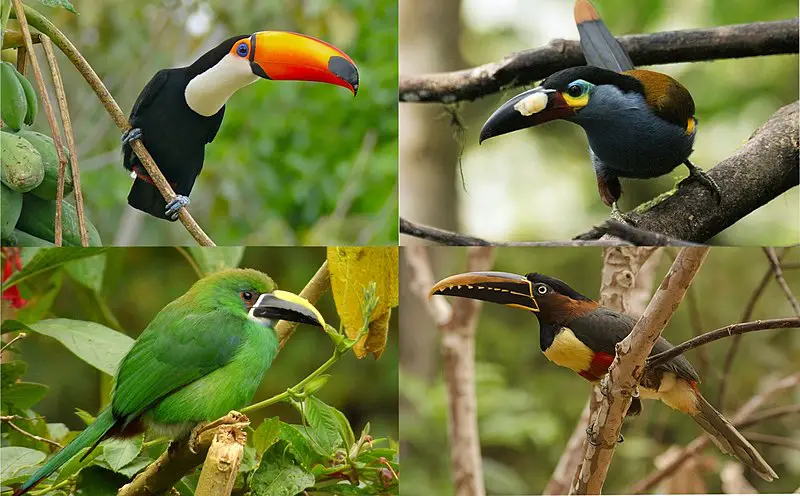
Toucans are members of the Ramphastidae family, which is closely related to American barbets. These birds have brightly colored feathers and large beaks that come in a variety of colors.
They tend to live high up in trees, where they make their nests with two or four white eggs inside.
Toucans typically feed on fruits and sometimes small insects as well. Some species can even catch larger animals such as reptiles and amphibians for food.
Although toucans like to keep close together when living in groups, during breeding season they become more aggressive towards each other due to competition over resources like nesting sites or food sources.
Scientific classification:
| Kingdom | Animalia |
| Phylum | Chordata |
| Class | Aves |
| Order | Piciformes |
| Infraorder | Ramphastides |
| Family | Ramphastidae Vigors, 1825 |
Also Featured In: Beautiful Brazilian Birds, Birds That Live in the Jungle
5. Herons
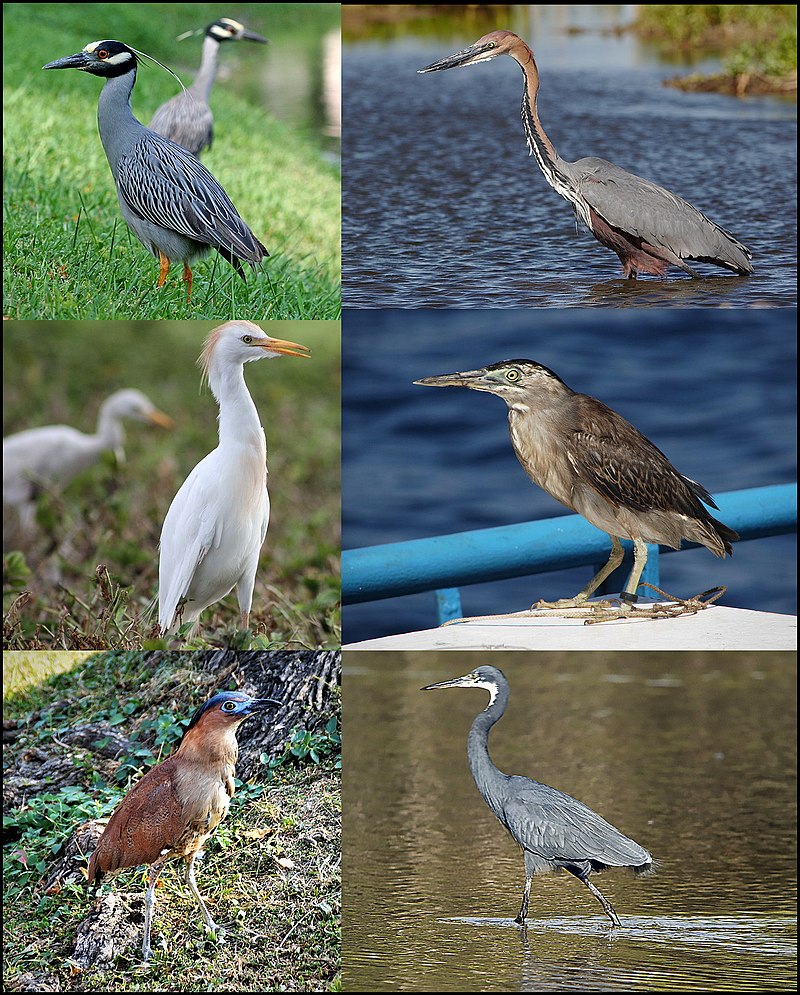
Herons are graceful and elegant birds belonging to the family Ardeidae, with 72 distinct species.
They have long legs and necks that are well-adapted for wading in shallow water like streams or ponds.
Herons can be found near freshwaters as well as along coastal areas worldwide.
Some of these species may also be referred to as egrets, bitterns, or zigzag herons/bitterns because they belong to certain genera such as Botaurus and Ixobrychus respectively.
These birds stand tall when searching for food by standing still in a shallow body of water while waiting patiently until prey appears before quickly capturing it with their sharp bills.
Scientific classification:
| Kingdom | Animalia |
| Phylum | Chordata |
| Class | Aves |
| Order | Pelecaniformes |
| Suborder | Ardei |
| Family | Ardeidae Leach, 1820 |
Also Featured In: Most Common Types of Bangladeshi Birds, Birds You’ll Find in Moldova
6. Barn Owl
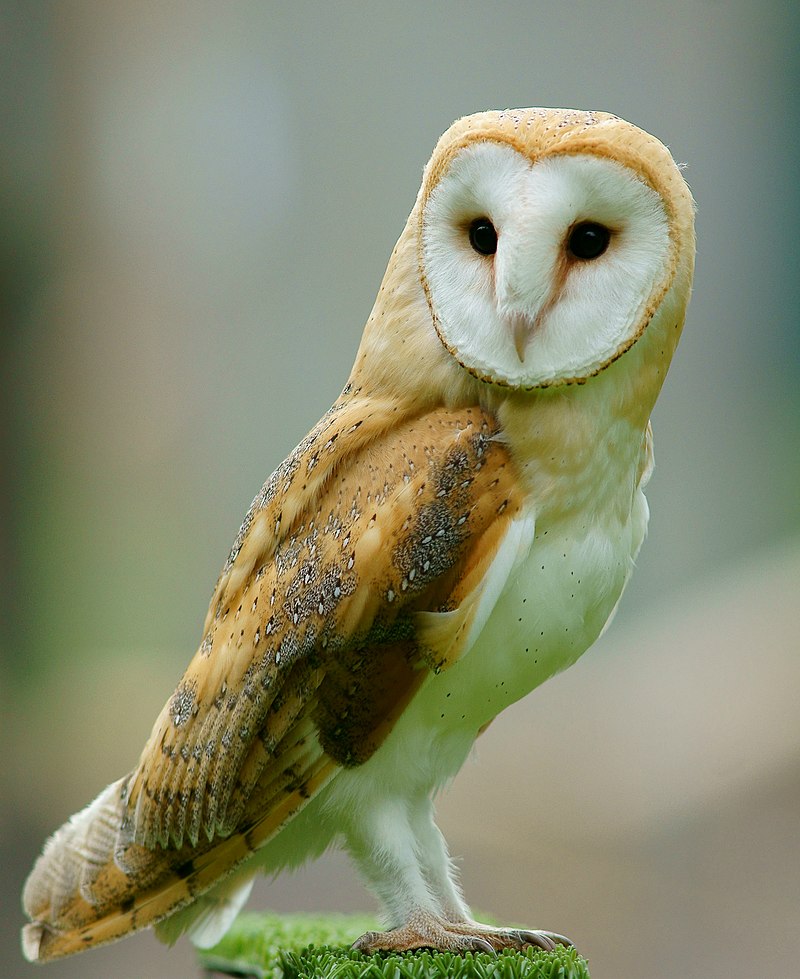
Barn owls are a beautiful and fascinating species of birds found around the world, except in polar and desert regions, most of Indonesia, and some Pacific Islands.
They have large eyes, thin legs, and long wings that help them to hunt silently in low-light conditions.
Their white coloring helps them blend into their surroundings making it easier for them to catch prey.
Barn owls are nocturnal hunters who use their impressive hearing capabilities to locate rodents moving within vegetation or tunnels beneath the ground.
They also feed on insects such as beetles, moths, etc., which they can detect from high up in flight using their excellent vision even at night time.
The barn owl plays an important role in balancing ecosystems by controlling rodent populations which is why they should be protected wherever possible so that this vital service continues uninterruptedly.
Scientific classification:
| Kingdom | Animalia |
| Phylum | Chordata |
| Class | Aves |
| Order | Strigiformes |
| Family | Tytonidae |
| Genus | Tyto |
| Species | T. alba |
Also Featured In: Native Birds Of Germany, Belarus Birds You Should Know
7. Eurasian Blue Tit
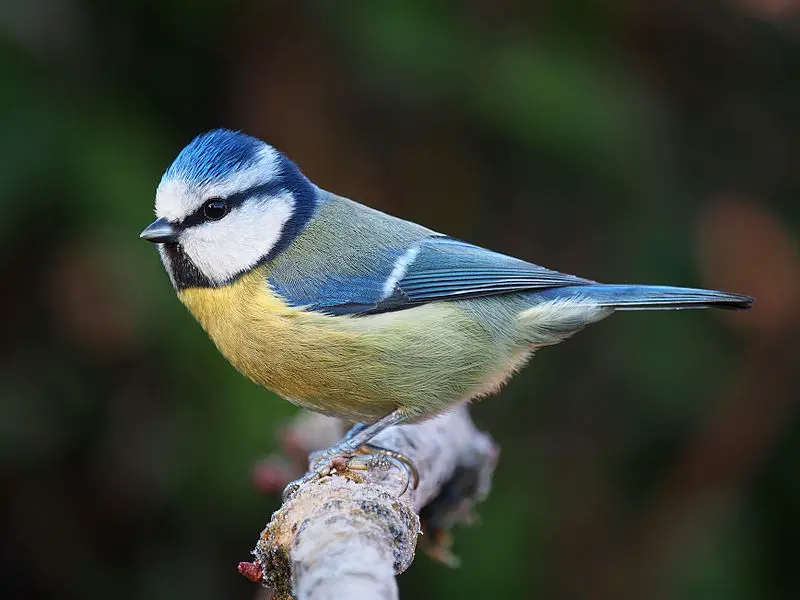
The Eurasian blue tit is a small passerine bird belonging to the Paridae family. Its bright blue and yellow plumage makes it easily recognizable, along with its small size.
They are usually resident birds that do not migrate, living throughout temperate or subarctic Europe and the western Palearctic in deciduous woodlands.
These birds breed year-round and are common residents of these areas.
Their diet consists mainly of insects but they also feed on seeds during winter months when insects become scarce.
They can be found both alone or in pairs searching for food amongst trees branches, shrubs, and grasses as well as visiting gardens for supplementary food sources such as peanut feeders provided by garden owners.
Scientific classification:
| Kingdom | Animalia |
| Phylum | Chordata |
| Class | Aves |
| Order | Passeriformes |
| Family | Paridae |
| Genus | Cyanistes |
| Species | C. caeruleus |
Also Featured In: Birds of United Kingdom, Italian Birds You Should Know
8. Eurasian Bullfinch
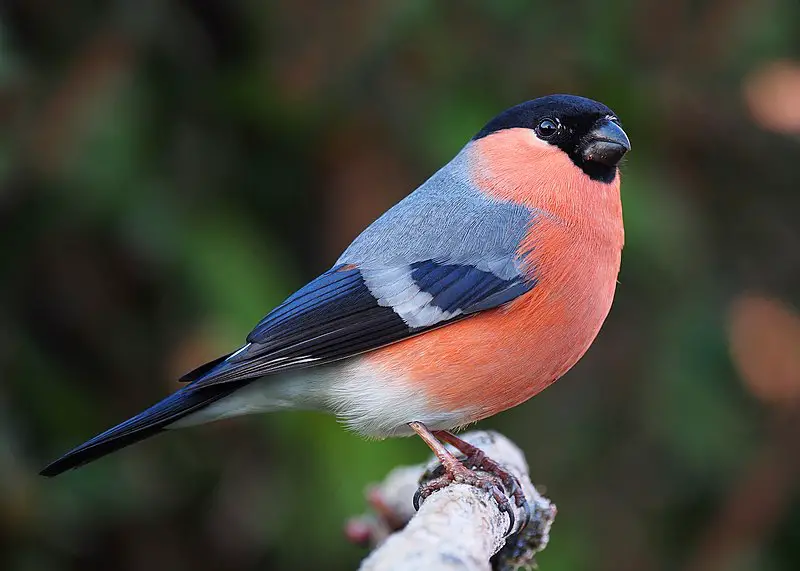
The Eurasian Bullfinch is a small bird found in the finch family, Fringillidae. It has an unmistakable appearance with its plump body and bright pink chest.
Its head is grayish-brown while its wings are black with white edging along the tips of some feathers. The tail is also black-tipped with white or yellowish edges.
They inhabit open woodlands and gardens throughout Europe, North Africa, parts of Asia, and western Siberia in search of food such as berries, buds, or insects which they feed on during winter months when other sources become scarce.
These birds form monogamous pairs to breed each year between March through August where both parents incubate their eggs during this time until hatching around mid-May.
Usually producing two broods per season if conditions are favorable for nesting success.
Scientific classification:
| Kingdom | Animalia |
| Phylum | Chordata |
| Class | Aves |
| Order | Passeriformes |
| Family | Fringillidae |
| Subfamily | Carduelinae |
| Genus | Pyrrhula |
| Species | P. pyrrhula |
Also Featured In: Ukrainian Birds You Should Know, Most Common Lithuanian Birds
9. Lilac-Breasted Roller
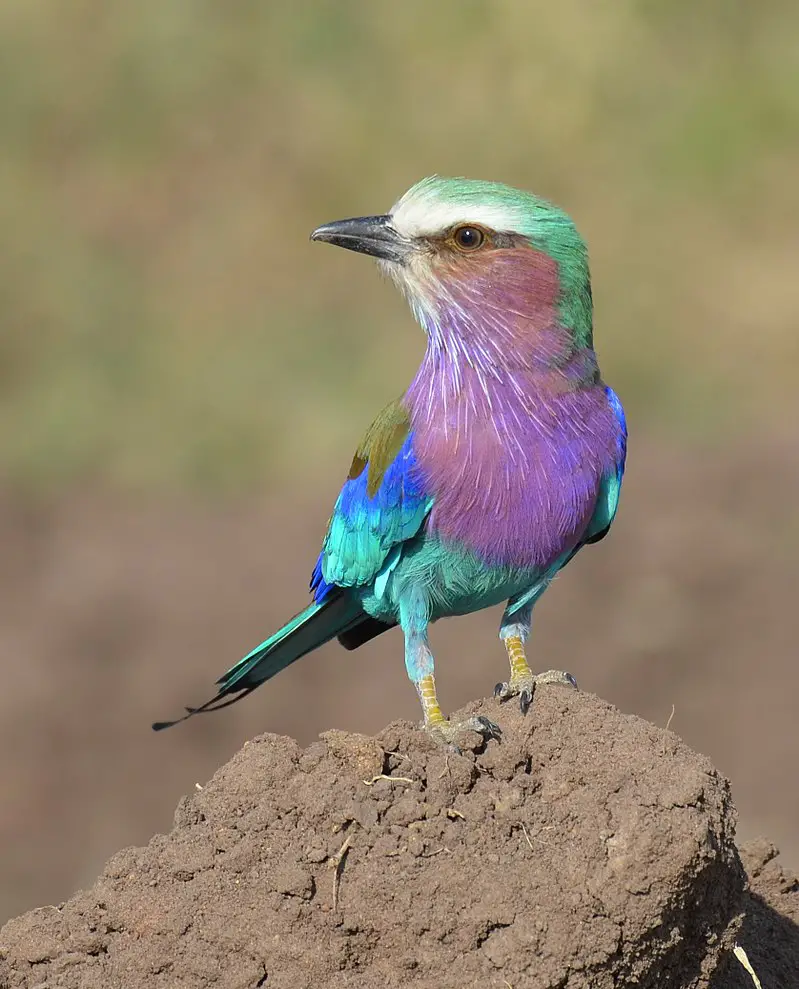
The Lilac-breasted Roller is a spectacular bird native to Southern and Eastern Africa, with occasional appearances in the southern Arabian Peninsula.
With its bright purple chest plumage and distinct black stripes on its wings and tail feathers, it stands out among birds of the same family.
It is usually found alone or in pairs perched atop trees or other high viewpoints, often used as lookout points for predators.
This species prefers open areas such as woodlands and savannas; it avoids treeless places like deserts due to their lack of protection from potential dangers.
Its call is loud and melodious – an unmistakable sound echoing through African skies.
Scientific classification:
| Kingdom | Animalia |
| Phylum | Chordata |
| Class | Aves |
| Order | Coraciiformes |
| Family | Coraciidae |
| Genus | Coracias |
| Species | C. caudatus |
Also Featured In: Birds of Tanzania, African Birds
10. Grey Crowned Crane
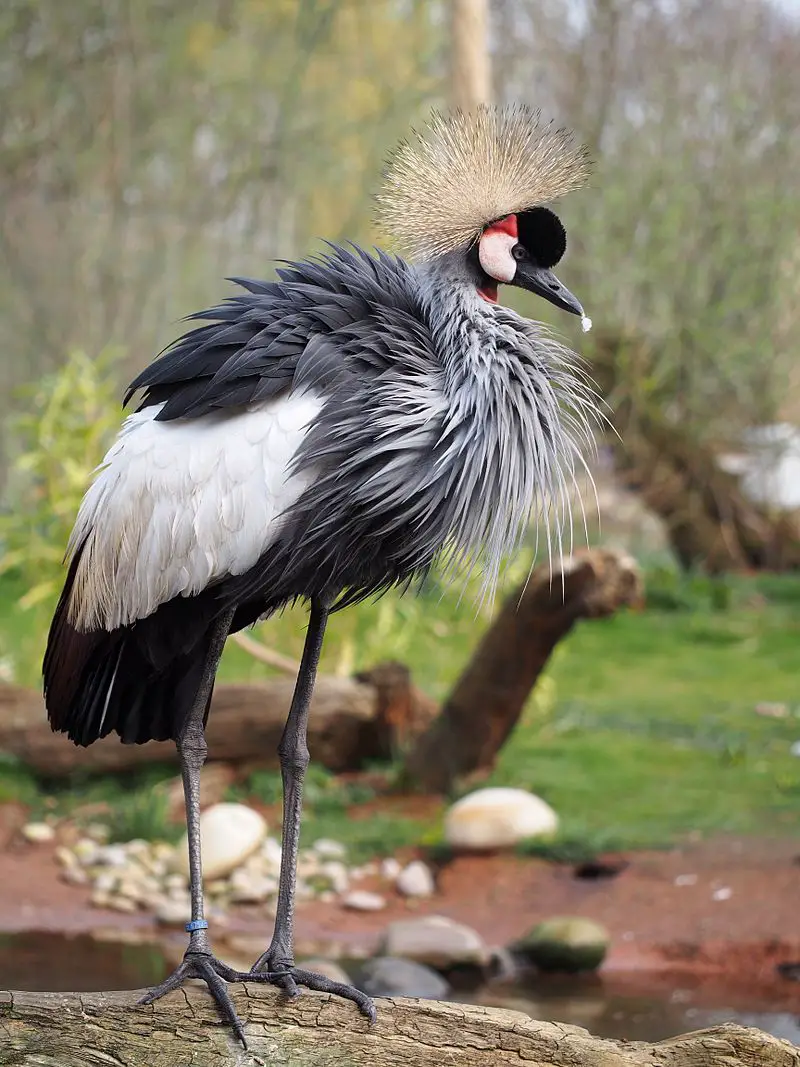
The Grey Crowned Crane is a beautiful bird native to eastern and southern Africa. It belongs to the crane family, Gruidae, and its stunning plumage consists of grey feathers topped with golden crowns on their heads.
This species has become Uganda’s national bird due to its gracefulness in flight as well as for being an important part of local cultures across the continent.
The Grey Crowned Crane stands out from other birds not only because of its colorful appearance but also because it performs elaborate mating dances involving leaps, bows, throwing their head back, or flapping wings while calling loudly – all to attract a mate.
In addition to these displays, they are highly social animals that form strong bonds with one another and can live up to 20 years if given proper care.
Scientific classification:
| Kingdom | Animalia |
| Phylum | Chordata |
| Class | Aves |
| Order | Gruiformes |
| Family | Gruidae |
| Genus | Balearica |
| Species | B. regulorum |
Also Featured In: Birds of South African, Savanna Birds You Need to See
11. Black Crowned Crane
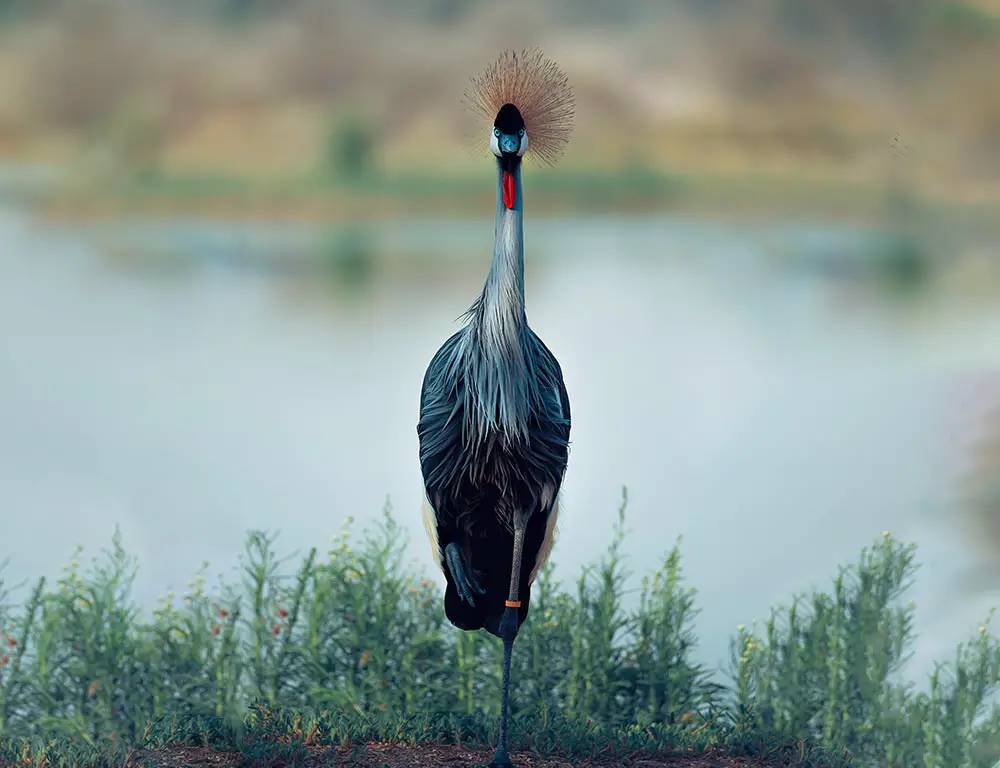
The Black-crowned crane is a beautiful bird, native to sub-Saharan Africa. It has a distinctive golden crown made of bristle feathers and can be found in shallow wetlands during the wet season.
These areas act as its primary breeding, feeding, and roosting sites but it also forages on grasslands.
This species relies heavily on wetlands for survival as it uses them to breed, feed, rest, and even molt.
The black-crowned crane plays an important role in local African folklore – with many legends surrounding this majestic creature – and is considered an emblem of good luck or prosperity by some cultures.
Its numbers are declining due to habitat destruction so conservation efforts have been implemented which aim at protecting these birds from further decline.
Scientific classification:
| Kingdom | Animalia |
| Phylum | Chordata |
| Class | Aves |
| Order | Gruiformes |
| Family | Gruidae |
| Genus | Balearica |
| Species | B. pavonina |
Also Featured In: Common Kenyan Birds,
12. Cardinal
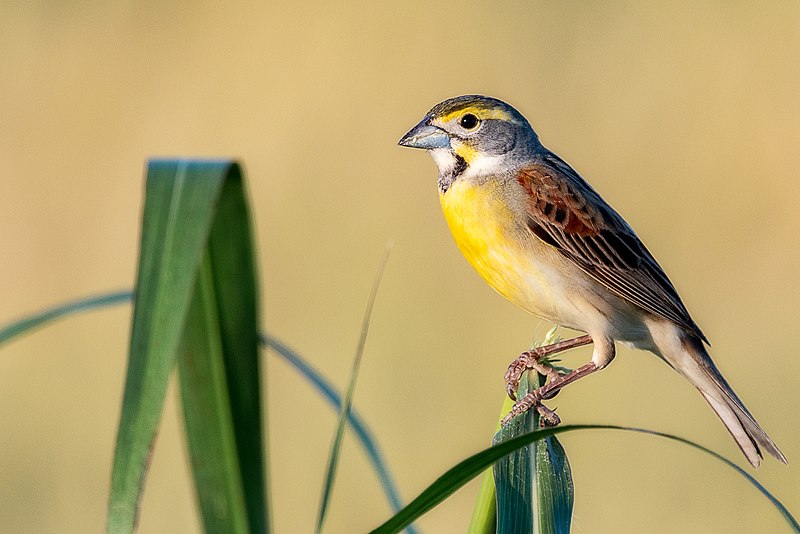
Cardinalidae is a family of passerine birds endemic to the New World that includes cardinals, grosbeaks, and buntings.
This large group has great diversity in its members which range from tanager-like Piranga to warbler-like Granatellus.
They are usually distinguished by their bright plumage with reds, oranges, and yellows being common among them.
Their strong bills enable them to feed on seeds, fruits, and insects as well as other small prey items like lizards or frogs depending upon species.
Cardinals also have loud calls often used for territorial defense and courtship purposes while some can even imitate sounds made by other animals.
These adaptable birds inhabit a variety of habitats across North America making them an important part of many ecosystems there.
Scientific classification:
| Kingdom | Animalia |
| Phylum | Chordata |
| Class | Aves |
| Order | Passeriformes |
| Superfamily | Emberizoidea |
| Family | Cardinalidae Ridgway, 1901 |
Also Featured In: Common Birds in Canada, Common Denmark Birds
13. Parrots
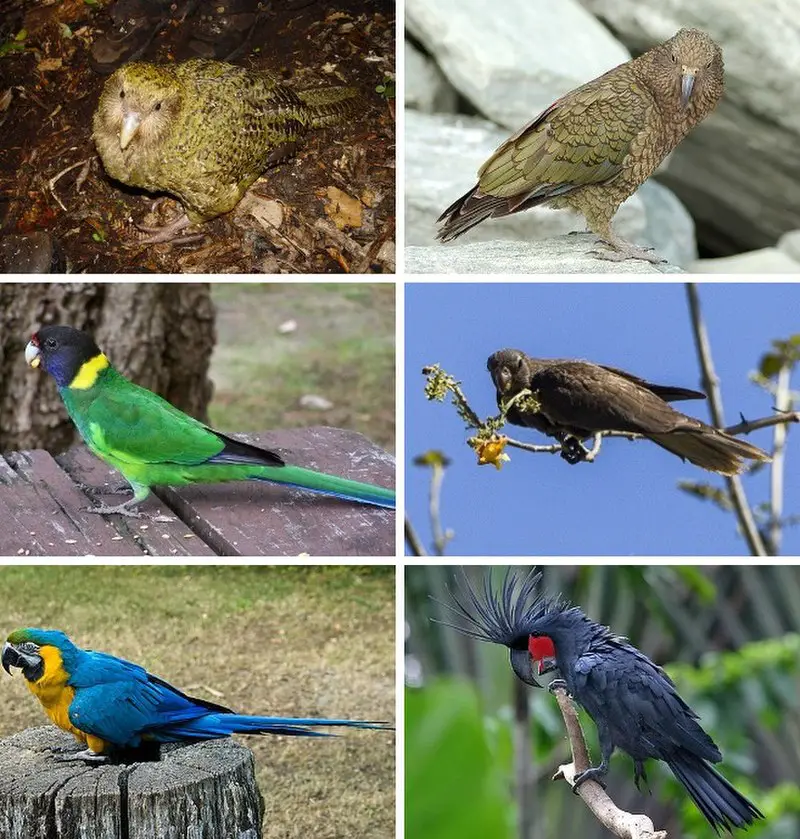
Parrots are a diverse group of birds, found in tropical and subtropical regions. They make up the order Psittaciformes, which is divided into three superfamilies: “true” parrots (Psittacoidea), cockatoos (Cacatuoidea) and New Zealand Parrots (Strigopoidea).
Many species have brightly colored feathers that can be red, yellow, or blue. Their strong curved bills allow them to feed on fruits, nuts, and seeds.
Parrot behavior ranges from playful to aggressive depending on their environment and socialization with humans.
Some even learn human words. As beloved pets, they bring joy to many households around the world though it’s important for owners to understand how best to care for these intelligent creatures so as not to cause distress or harm.
Scientific classification:
| Kingdom | Animalia |
| Phylum | Chordata |
| Class | Aves |
| Clade | Psittacopasserae |
| Order | Psittaciformes Wagler, 1830 |
Also Featured In: Most common birds in Australia, Aviary Birds You Should Know
14. Major Mitchell’s Cockatoo
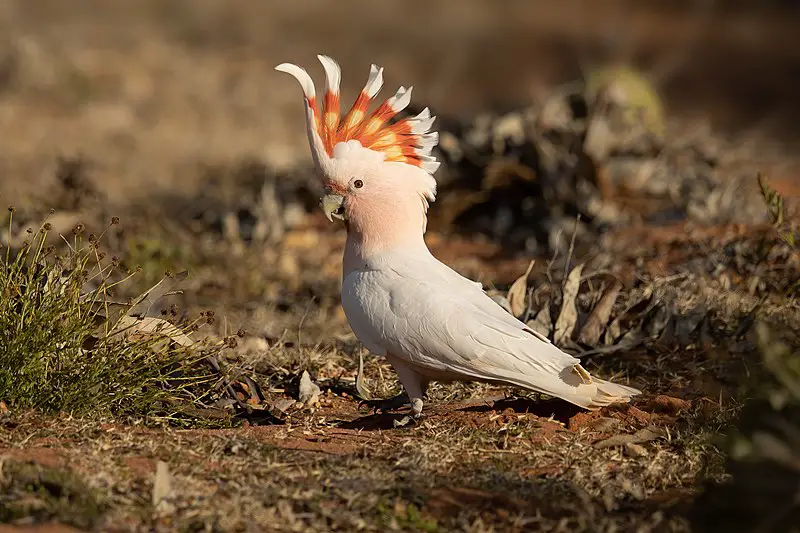
The Major Mitchell’s cockatoo is a medium-sized bird native to arid and semi-arid regions of Australia. It has been seen in other climates, such as South-East Queensland’s subtropical region.
The species was first described by Irish naturalist Nicholas Aylward Vigors in 1831 under the name Plyctolophus leadbeateri.
This pink cockatoo has distinctive grey downy feathers on its back and wings which contrast with its snowy white head, chest, and tail feathers.
Its red crest stands out against the otherwise monochrome body when it spreads open during displays of excitement or aggression.
Despite being quite rare, these birds are hardy survivors that can live up to 80 years if given proper care and nutrition.
Scientific classification:
| Kingdom | Animalia |
| Phylum | Chordata |
| Class | Aves |
| Order | Psittaciformes |
| Family | Cacatuidae |
| Genus | Lophochroa Bonaparte, 1857 |
| Species | L. leadbeateri |
Also Featured In: Queensland Birds You Should Know, South Australian Birds
15. Pelican
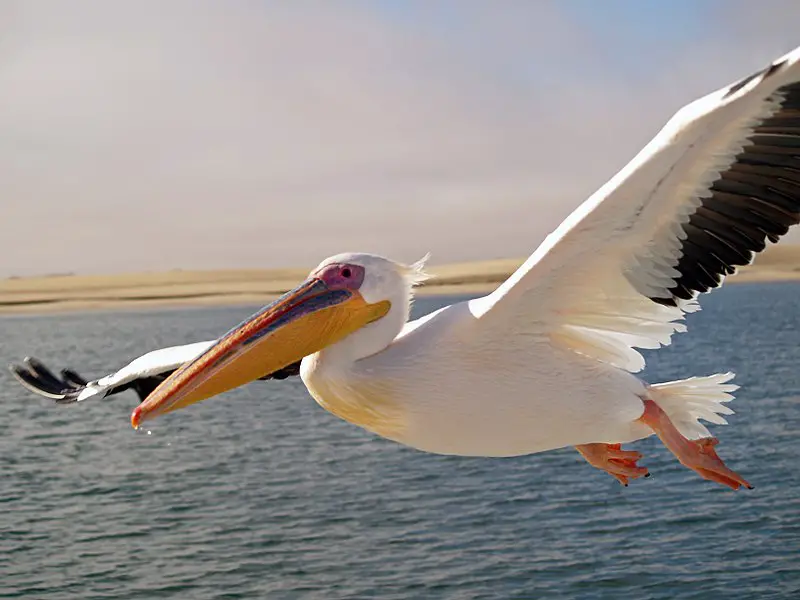
Pelicans are large water birds and form part of the family Pelecanidae. They have long beaks, allowing them to scoop up prey from both land and sea with ease.
Their most distinctive feature is their huge throat pouch which they use to drain water before swallowing their food.
Most pelican species have predominantly pale plumage however exceptions such as the brown and Peruvian pelicans exhibit darker coloring.
The bill, face skin, and pouch of all Pelican species become brightly colored during the breeding season to attract mates.
Pelicans can often live up to 25 years because they eat mostly fish which provides them with enough nutrients for longevity.
Scientific classification:
| Kingdom | Animalia |
| Phylum | Chordata |
| Class | Aves |
| Order | Pelecaniformes |
| Family | Pelecanidae |
| Genus | Pelecanus Linnaeus, 1758 |
Also Featured In: Most Common Romanian Birds, Birds that Live in the Ocean
16. Roseate Spoonbill
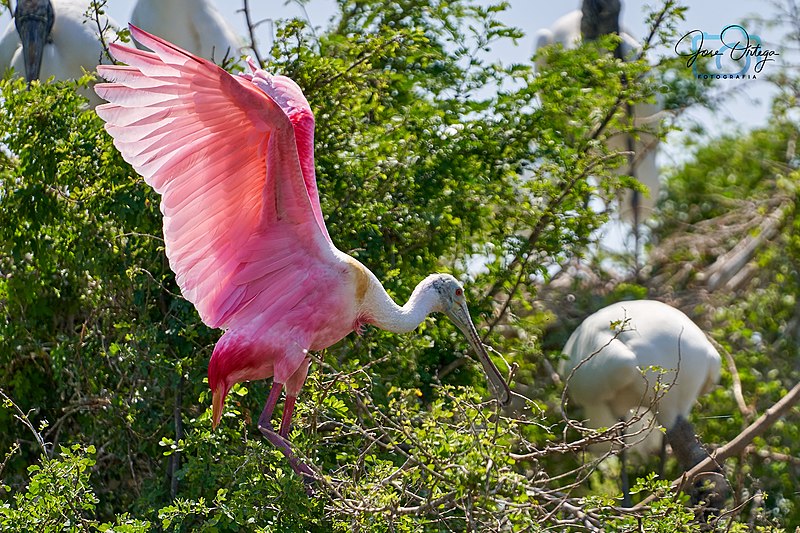
The Roseate Spoonbill is a beautiful and majestic bird found in both North and South America.
It belongs to the ibis family, Threskiornithidae, and its vibrant pink color comes from canthaxanthin pigment derived from their diet of crustaceans like shrimp.
Sadly plume hunting has almost driven this species close to extinction during the 18th and 19th centuries but fortunately, it’s making a comeback due to conservation efforts made by dedicated wildlife organisations.
Its large spoon-like bill helps them filter out food sources such as small fish or frogs from shallow water areas while they wade through mudflats with their long legs looking for something tasty.
With its unique appearance, graceful wingspan, and impressive flight capabilities, the Roseate Spoonbill is an incredibly photogenic animal that will captivate any viewer’s attention who happens to be lucky enough to witness it in all its glory.
Scientific classification:
| Kingdom | Animalia |
| Phylum | Chordata |
| Class | Aves |
| Order | Pelecaniformes |
| Family | Threskiornithidae |
| Genus | Platalea |
| Species | P. ajaja |
Also Featured In: Costa Rica Birds, Birds You’ll Find in South Texas
17. Scaly-Breasted Munia
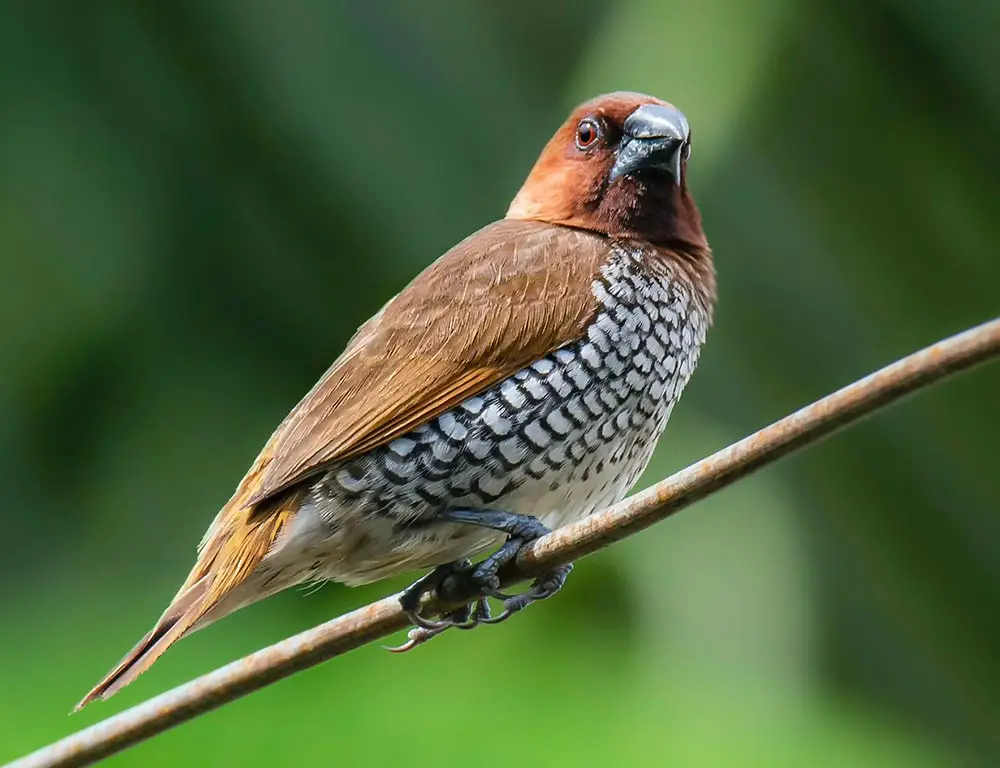
The Scaly-breasted Munia is a small estrildid finch native to tropical Asia. It was formally described and named by Carl Linnaeus in 1758, as its name suggests from the distinct scale-like feather markings on the breast and belly.
The adult bird has brown upperparts, with white lower parts spotted blackish-brown. Its head is pale grey or whitish with an orange beak and legs; the eyes are dark brown.
This species feeds mainly on grass seeds, but also eats insects such as caterpillars in some areas of their range during breeding season.
An interesting fact about this bird is that it builds its nest out of plant stems woven together into a cup shape suspended from trees or shrubs.
Overall they are quite common birds that can often be seen hopping around near human habitation looking for food scraps.
Scientific classification:
| Kingdom | Animalia |
| Phylum | Chordata |
| Class | Aves |
| Order | Passeriformes |
| Family | Estrildidae |
| Genus | Lonchura |
| Species | L. punctulata |
Also Featured In: Mauritius birds, Birds that Live in Uttar Pradesh
18. Penguins
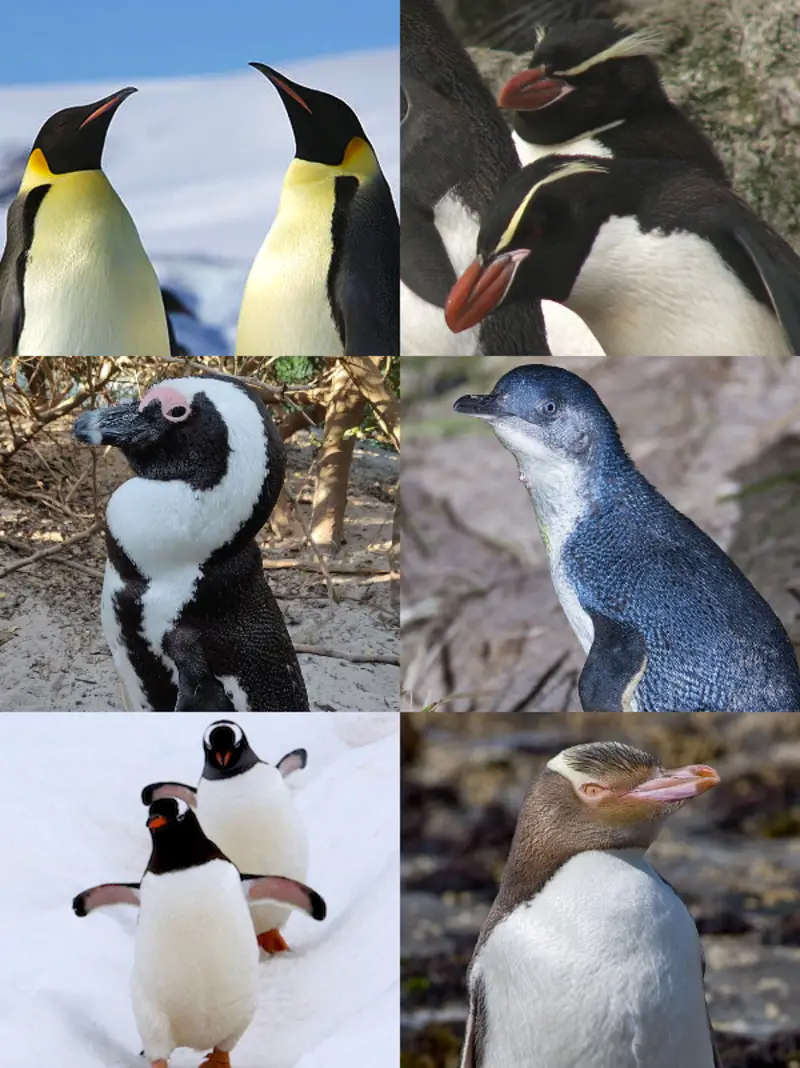
Penguins are an amazing species of aquatic birds that live mainly in the Southern Hemisphere. They have a unique plumage, which is black and white counter-shaded to aid them while swimming in the water.
Penguins feed mostly on krill, small crustaceans found near Antarctica. These remarkable creatures can’t fly but they compensate by being excellent swimmers due to their flippers-like wings which help them move faster underwater.
All this makes penguins one of nature’s most fascinating animals – not just for kids.
Scientific classification:
| Kingdom | Animalia |
| Phylum | Chordata |
| Class | Aves |
| Clade | Austrodyptornithes |
| Order | Sphenisciformes Sharpe, 1891 |
| Family | Spheniscidae Bonaparte, 1831 |
Also Featured In: Antarctica Birds, Galapagos Birds You Should Know
19. Old World Sparrows
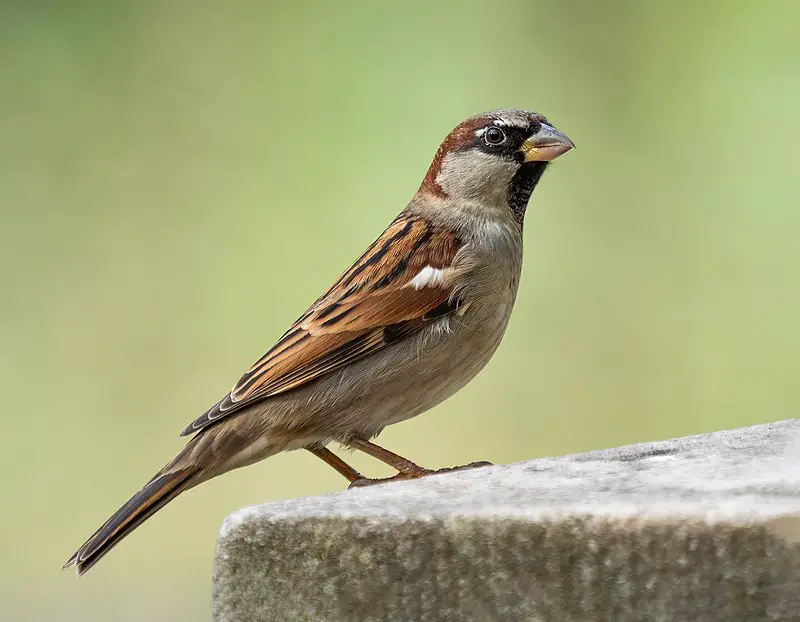
Old World sparrows are small passerine birds belonging to the family Passeridae. They are characteristically much smaller than their New World counterparts, ranging in size from 6 centimeters up to 20 centimeters depending on species.
The most common characteristics of these birds include a black or grey head and upper body with white underparts and white stripes above their eyes.
Notable features such as barring and streaking can be found across different species within this group.
Old-world sparrows typically inhabit open grassland areas but have been known to nest around human dwellings near urban settings as well, making them easily recognizable by many people all over the globe.
Scientific classification:
| Kingdom | Animalia |
| Phylum | Chordata |
| Class | Aves |
| Order | Passeriformes |
| Suborder | Passeri |
| Infraorder | Passerida |
| Superfamily | Passeroidea |
| Family | Passeridae Rafinesque, 1815 |
Also Featured In: Alaska Birds, Most Common Winter Birds
20. Swans
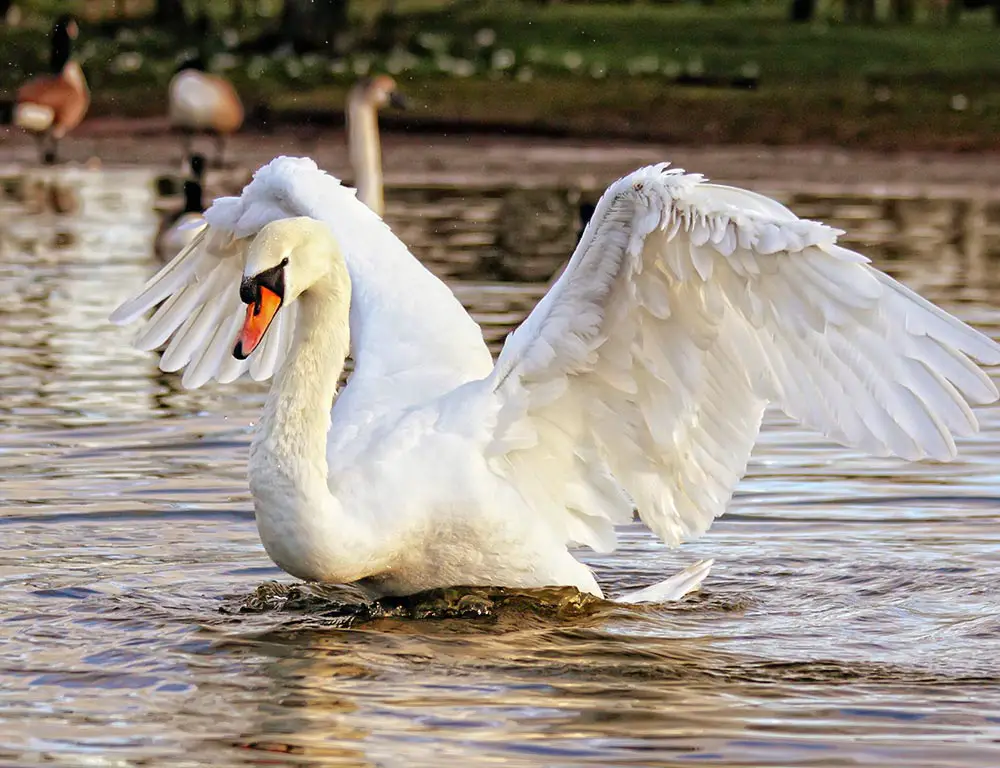
Swans are graceful and elegant birds belonging to the family Anatidae. They have a long neck, black beak, and large wings that give them their majestic look.
Their closest relatives include geese and ducks who belong to the same subfamily Anserinae as swans do.
There are six living species of swan found in different parts of the world – Mute Swan, Black-necked Swan, Tundra Swan, Whooper Swan, Trumpeter Swan, and Coscoroba Swam.
These beautiful creatures usually live on lakes or rivers but can also inhabit wetlands such as marshes or estuaries for nesting purposes.
Despite being very social animals with strong pair bonds they remain solitary during migration periods when they travel long distances looking for better feeding grounds.
Scientific classification:
| Kingdom | Animalia |
| Phylum | Chordata |
| Class | Aves |
| Order | Anseriformes |
| Family | Anatidae |
| Subfamily | Anserinae |
| Genus | Cygnus Garsault, 1764 |
Also Featured In: birds of white, Water Birds Live around Us
21. Puffins
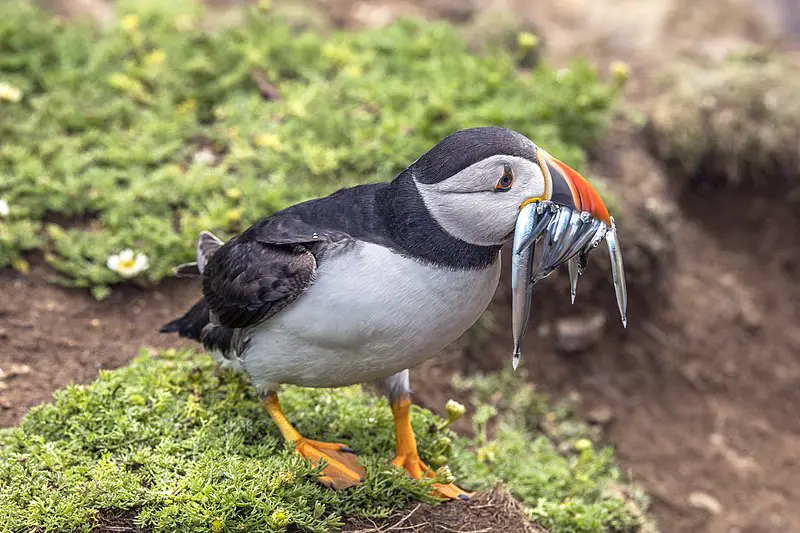
Puffins are small seabirds that belong to the bird genus Fratercula. They primarily feed by diving into the water and breed in colonies on coastal cliffs or offshore islands.
They can nest in crevices among rocks or in burrows in the soil. There are three species of puffins, with two found in the North Pacific Ocean and one in the Atlantic Ocean.
The tufted puffin and horned puffin are North Pacific species, while the Atlantic puffin is the only puffin species found in the Atlantic Ocean.
These birds have colorful beaks that are often compared to clowns’ faces, making them a popular sight among birdwatchers.
Puffins are fascinating creatures that have long been the subject of fascination and study among the scientific community.
Scientific classification:
| Kingdom | Animalia |
| Phylum | Chordata |
| Class | Aves |
| Order | Charadriiformes |
| Family | Alcidae |
| Tribe | Fraterculini |
| Genus | Fratercula Brisson, 1760 |
Also Featured In: Birds You’ll Find in the Sea, Most Common Nature Birds
22. Owls
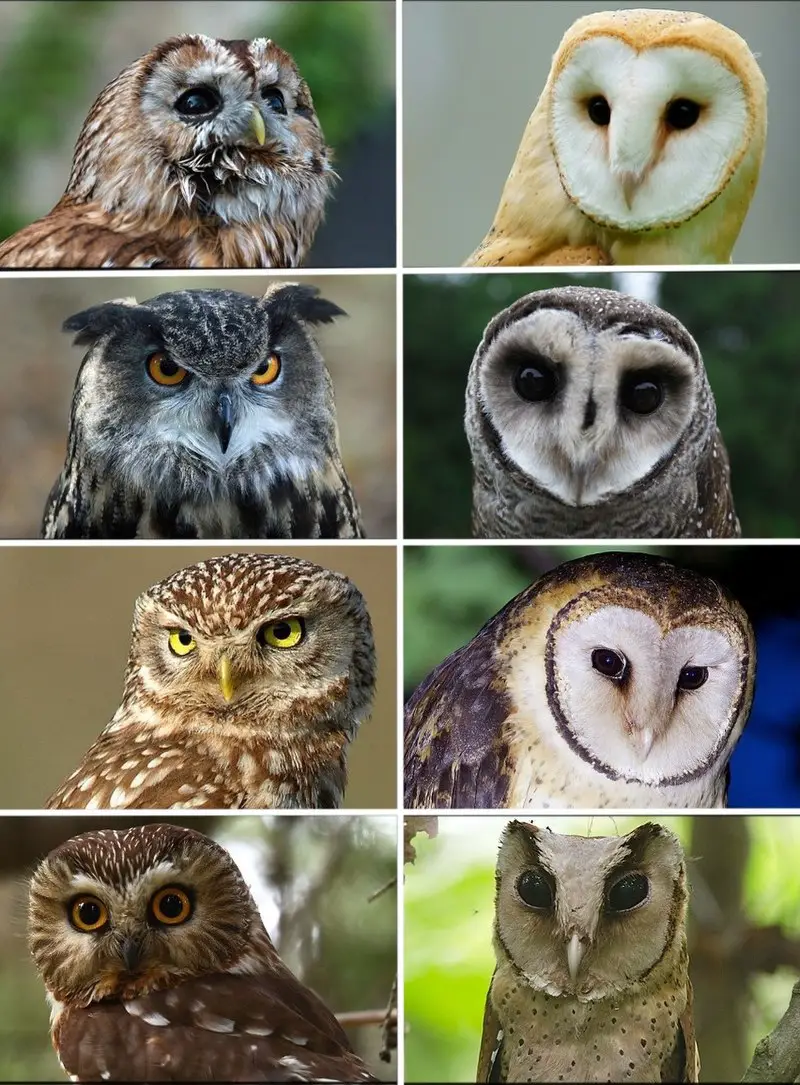
Owls are remarkable birds of prey that belong to the order Strigiformes. Known for their solitary and nocturnal behavior, these birds are commonly associated with an upright stance, broad head, binocular vision, binaural hearing, sharp talons, and specially adapted feathers for silent flight.
With over 200 species, owls are mostly carnivorous and hunt small mammals, making them excellent at controlling rodent populations.
Although most owls are solitary animals, some species, such as the gregarious burrowing owl, are social and interact regularly with their kind.
Despite their nocturnal habits, some owls, like the northern hawk owl, are diurnal and hunt during daylight hours.
All in all, owls are fascinating creatures that have intrigued bird watchers and scientists alike for many years.
Scientific classification:
| Kingdom | Animalia |
| Phylum | Chordata |
| Class | Aves |
| Clade | Telluraves |
| Order | Strigiformes Wagler, 1830 |
Also Featured In: Flight Birds You Should Know, Birds You’ll Find in Zoo
23. Lapwing
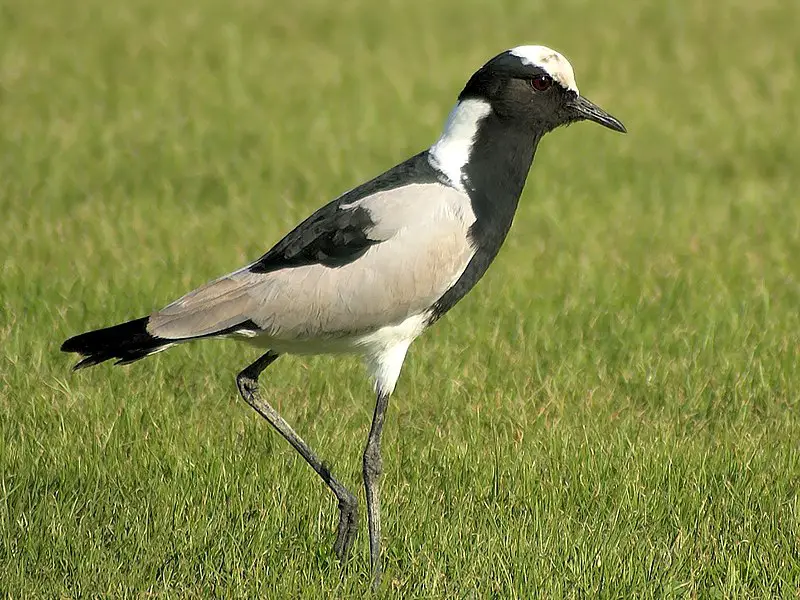
The Lapwing bird belongs to the subfamily Vanellinae and is a ground-nesting bird. It is similar to plovers and dotterels and ranges in size from 10 to 16 inches.
Lapwings are recognized for their slow, inconsistent wingbeats during flight and their high-pitched, wailing cry.
Interestingly, a group of Lapwings is known as a “deceit.” It is important to note that the terms “plover,” “lapwing,” and “dotterel” are not entirely interchangeable.
Lapwings are renowned for their striking appearance and stunning plumage. These birds are particularly skilled at camouflaging themselves and can blend in with their surroundings with ease.
Lapwings are fascinating creatures that are worth exploring further for bird enthusiasts and nature lovers alike.
Scientific classification:
| Kingdom | Animalia |
| Phylum | Chordata |
| Class | Aves |
| Order | Charadriiformes |
| Family | Charadriidae |
| Subfamily | Vanellinae Bonaparte, 1842 |
Also Featured In: Birds of Orkney, Birds of Wales: Exploring Diverse Habitats and Conservation Efforts
To Recap
Birds have been a prominent and enduring theme in the world of art, inspiring countless renowned painters to create masterpieces that capture the beauty, grace, and symbolism of these feathered creatures.
From the serene elegance of John James Audubon’s ornithological illustrations to the surreal and dreamlike compositions of René Magritte, these 23 famous paintings serve as a testament to the enduring fascination that birds evoke in artists and audiences alike.
Whether serving as symbols of freedom, transcendence, or simply as subjects of aesthetic appreciation, these avian-inspired works continue to resonate with viewers, reminding us of the profound connection between art and the natural world.